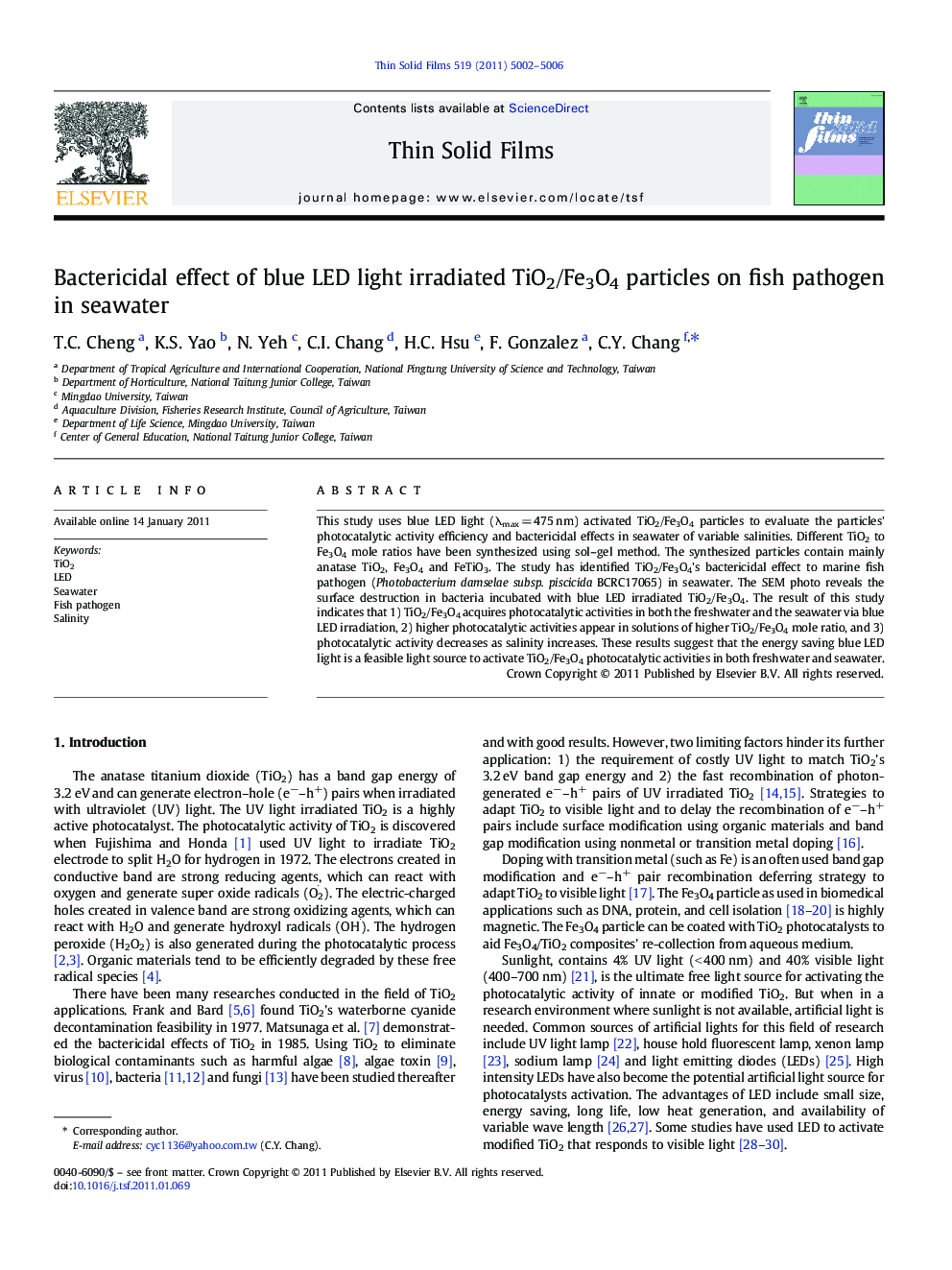| Article ID | Journal | Published Year | Pages | File Type |
|---|---|---|---|---|
| 1667719 | Thin Solid Films | 2011 | 5 Pages |
This study uses blue LED light (λmax = 475 nm) activated TiO2/Fe3O4 particles to evaluate the particles' photocatalytic activity efficiency and bactericidal effects in seawater of variable salinities. Different TiO2 to Fe3O4 mole ratios have been synthesized using sol–gel method. The synthesized particles contain mainly anatase TiO2, Fe3O4 and FeTiO3. The study has identified TiO2/Fe3O4's bactericidal effect to marine fish pathogen (Photobacterium damselae subsp. piscicida BCRC17065) in seawater. The SEM photo reveals the surface destruction in bacteria incubated with blue LED irradiated TiO2/Fe3O4. The result of this study indicates that 1) TiO2/Fe3O4 acquires photocatalytic activities in both the freshwater and the seawater via blue LED irradiation, 2) higher photocatalytic activities appear in solutions of higher TiO2/Fe3O4 mole ratio, and 3) photocatalytic activity decreases as salinity increases. These results suggest that the energy saving blue LED light is a feasible light source to activate TiO2/Fe3O4 photocatalytic activities in both freshwater and seawater.
